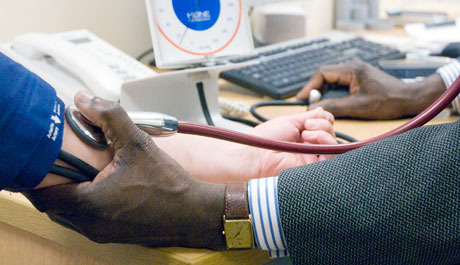NICE hypertension guidelines will increase GP workload, BMA warns

Proposed changes to the management of hypertension are likely to increase pressures in primary and secondary care, the BMA has warned.
Under the new guideline, which will replace the 2011 version, NICE recommends to offer antihypertensive drug treatment to stage one hypertension patients under 80 who have an estimated 10-year risk of CVD of 10% or more – a reduction on the previous ‘20% or greater’ threshold.
Responding to the consultation, the BMA warned that some of the proposals could increase pressures and workload in both primary and secondary care.
The BMA previously said GPs are ‘already working flat out’ managing patients’ CVD risk and that additional funding would be required to deal with any additional activity resulting in extra workload.
NICE acknowledged that the recommendations ‘will have a significant impact on practice because more people will now be eligible for treatment’.
It said: ‘It is difficult to predict the extent of the impact because there is variability in how the 2011 recommendation with a threshold of 20% is being implemented in practice.
‘People with stage one hypertension should already be monitored every year, but reducing the threshold will increase the number of people being prescribed antihypertensive drugs and increase staff time and consultations involved in starting and monitoring their drug treatment.’
The response from the BMA’s GP Committee said: ‘We are also concerned about the impact of these recommendations on primary care and secondary care workload, the latter will be a particular concern if our comments on referral are not heeded,’ she said.
‘We do not believe that all patients will benefit from this, particularly those who are more frail or multimorbid, or those with readings close to the ideal. The word “consider” needs to be added to prevent unwanted criticism should referral not be indicated.’
It continued: ‘We consider that the current workload and funding crisis in the NHS has produced a multimorbid health-care system in which the addition of tasks will inevitably produce harm elsewhere. We do not believe it is reasonable that guidance that results in increased pressures within the NHS is produced without recognition of lost opportunity costs for patients with other conditions.’
The reponse also said that the BMA was concerned that these decisions were made on economic factors.
It added: ‘We are concerned that the decision to recommend the offering of treatment to patients with stage one hypertension in the absence of other concerning features has been made on an economic model of cost-efficiency based on the treating of populations.
‘Within their consultations, doctors do not see populations but individuals, and an examination of the potential benefits and harms to the individual, based on absolute and not relative values, ought to be at the heart of this guideline, together with the information that clinicians will need to have in order to inform their patients.’
The response concluded: ‘The evidence for individual benefit in stage 1 hypertension is not robust and is insufficient for the level of pharmacological intervention that implementing this guideline would produce.’
The GPC also expressed concerns that the changes could increase primary and secondary care workload, especially regarding people with ‘resistant hypertension taking the optimal tolerated doses of 4 drugs’, who were recommended to ‘seek expert advice’ if their blood pressure remains uncontrolled.
A study published in November, which analysed nearly 40,000 low-risk patients across England, found not only was there no benefit to treating such patients with anti-hypertensive medication, it also had the potential to cause ‘harm’.
Visit Pulse Reference for details on 140 symptoms, including easily searchable symptoms and categories, offering you a free platform to check symptoms and receive potential diagnoses during consultations.









